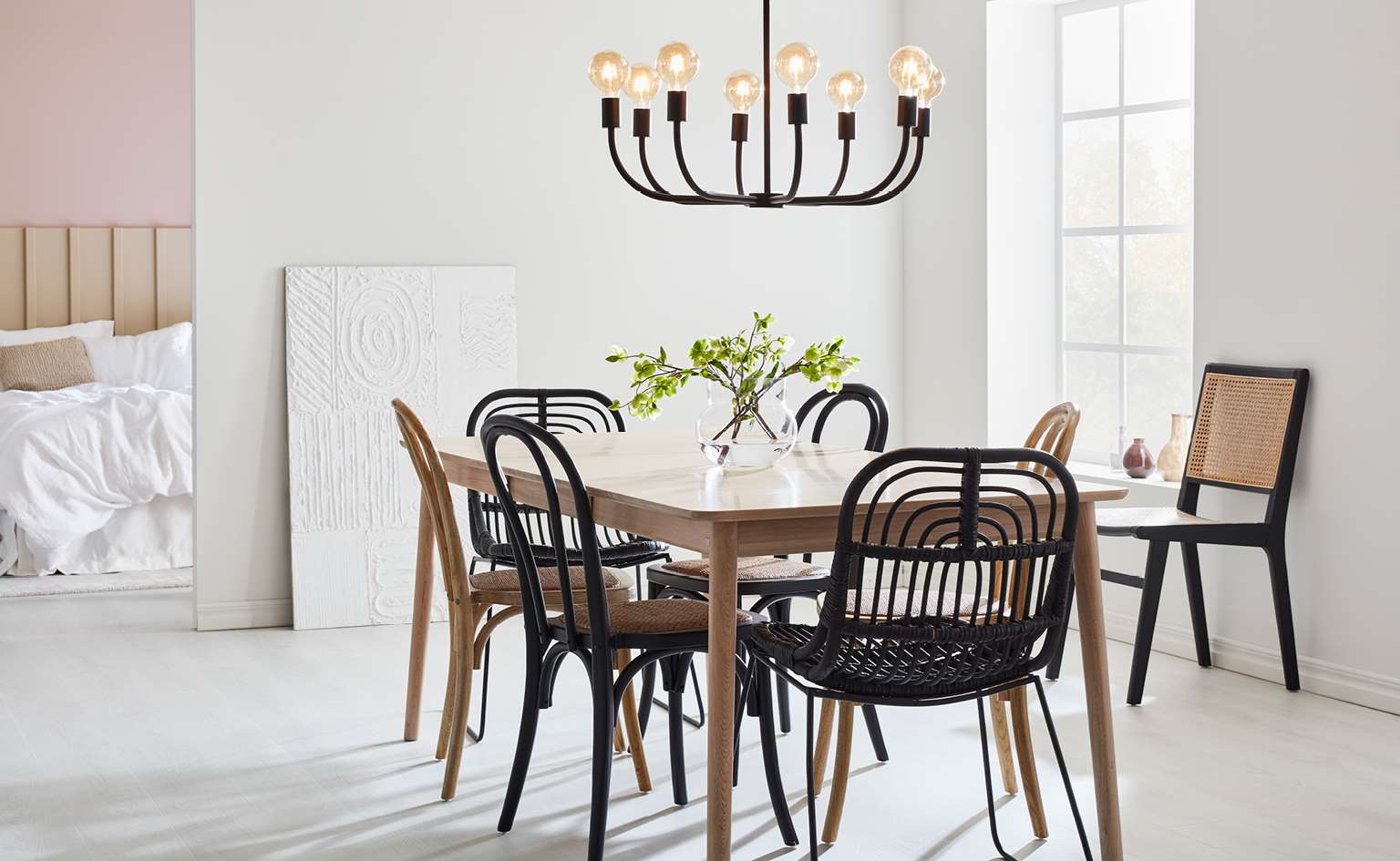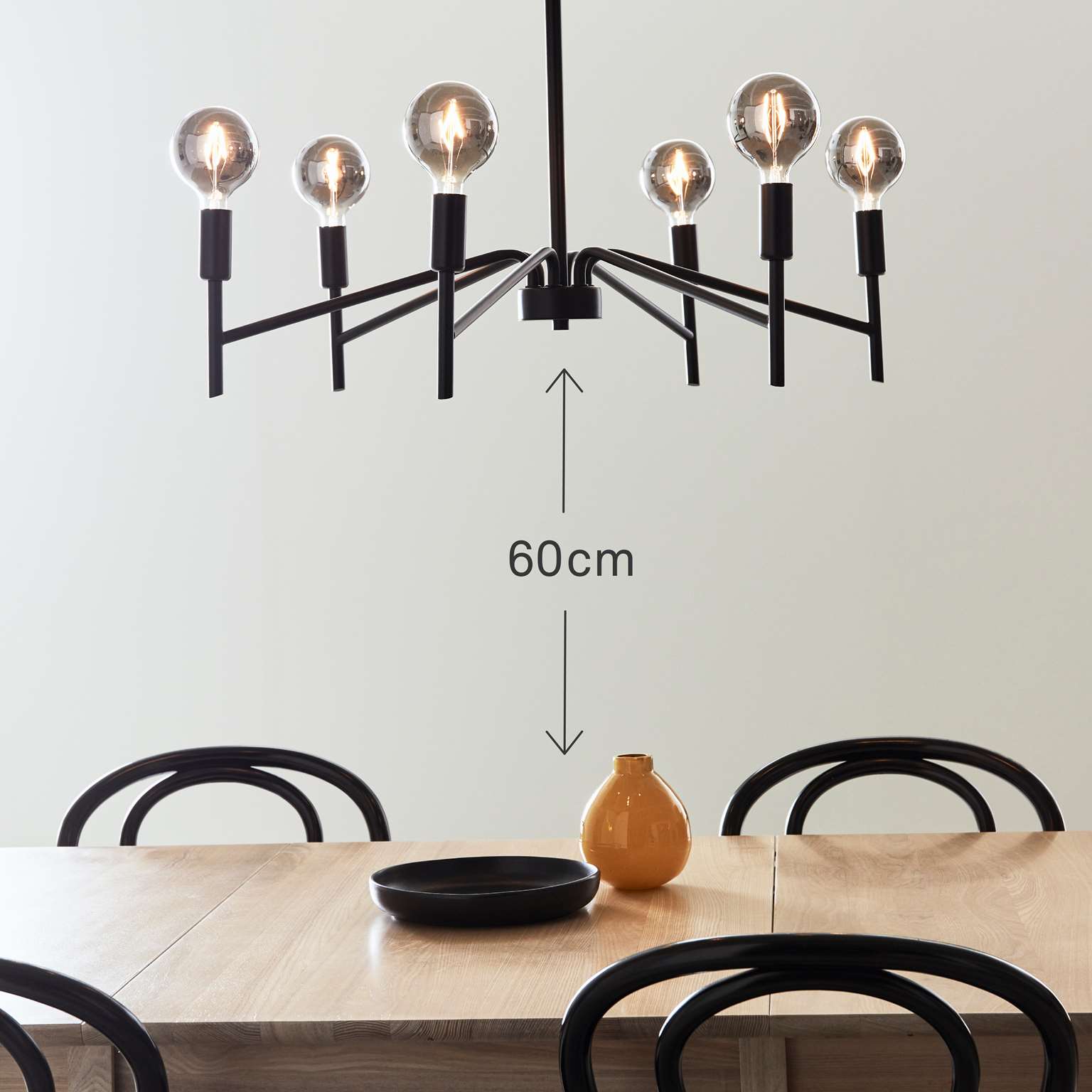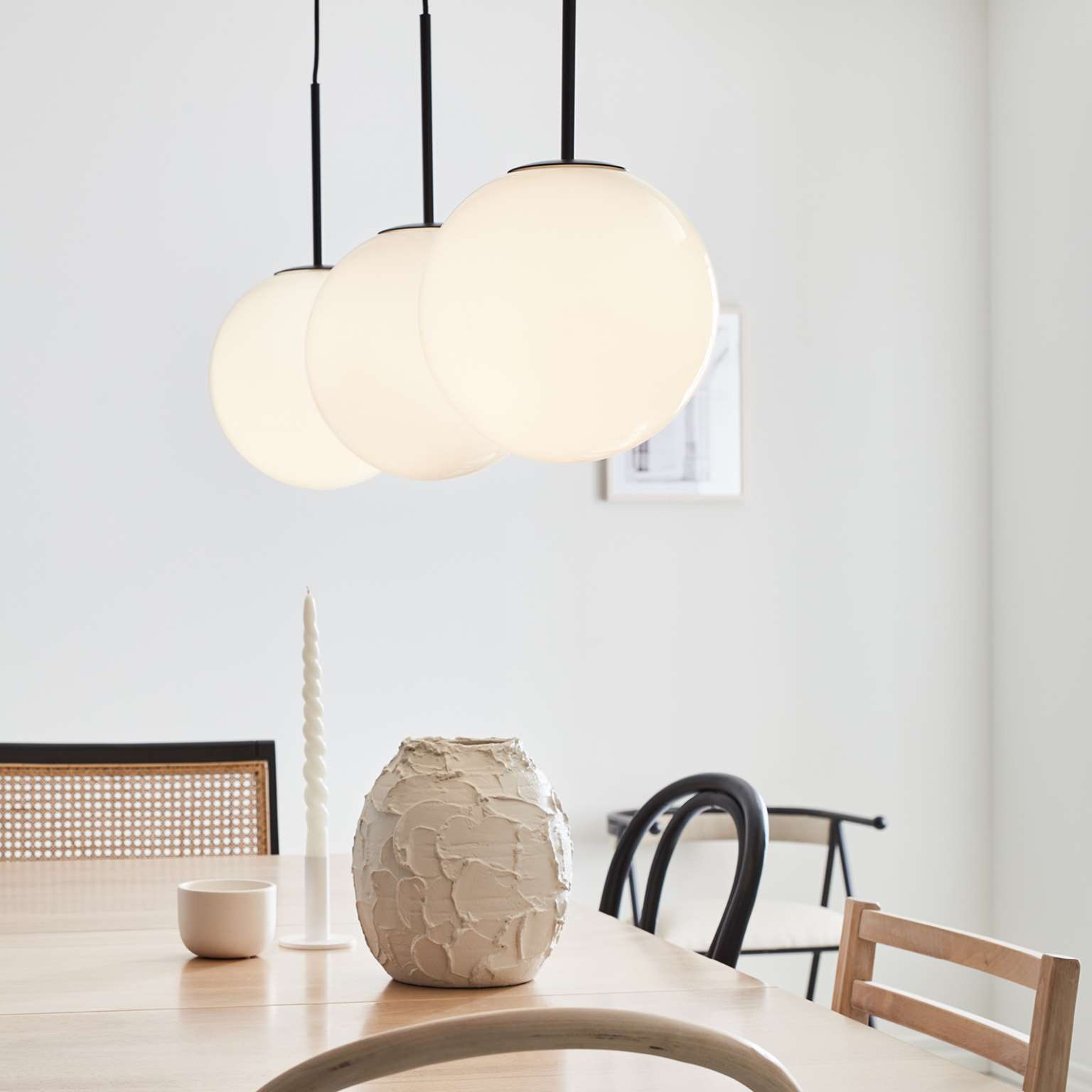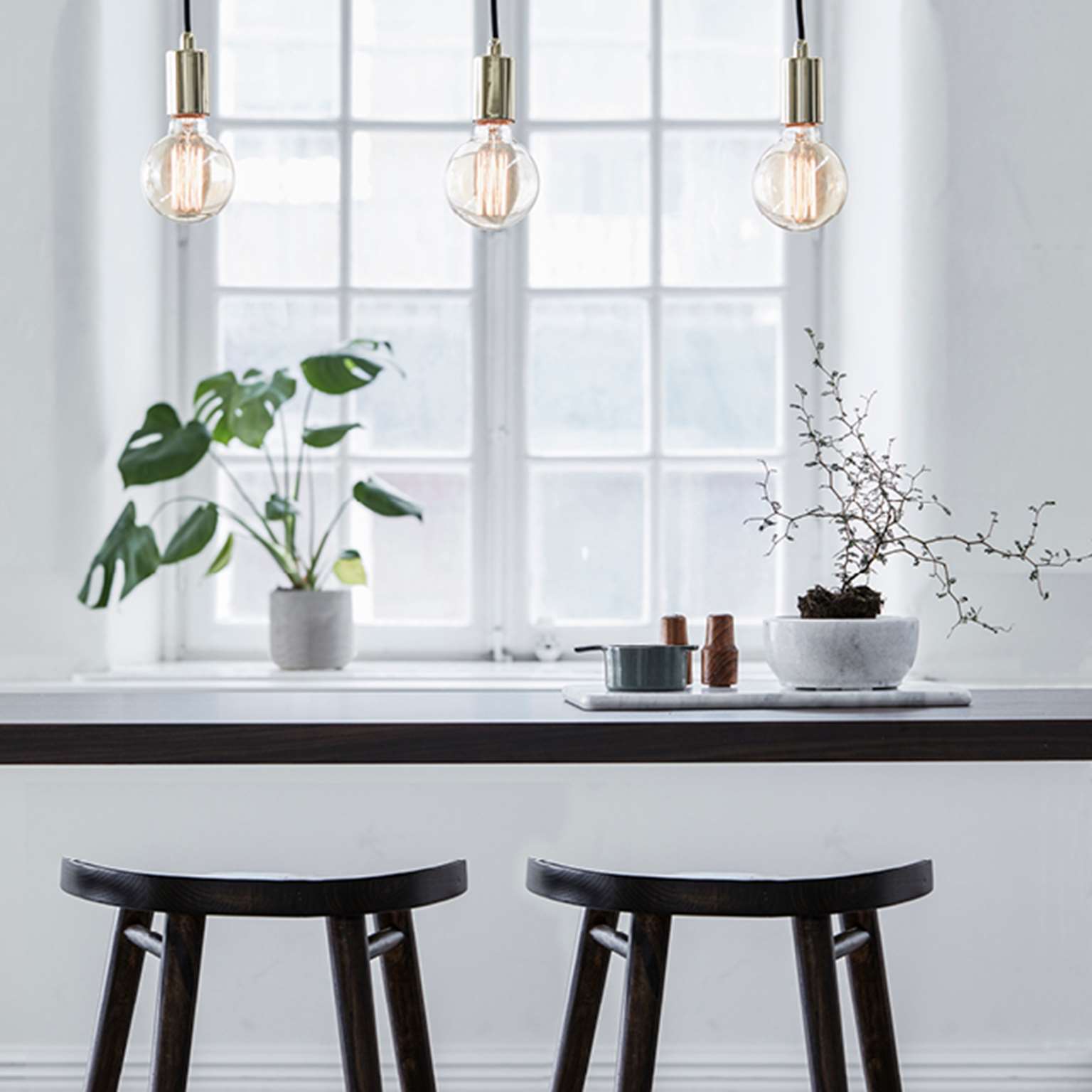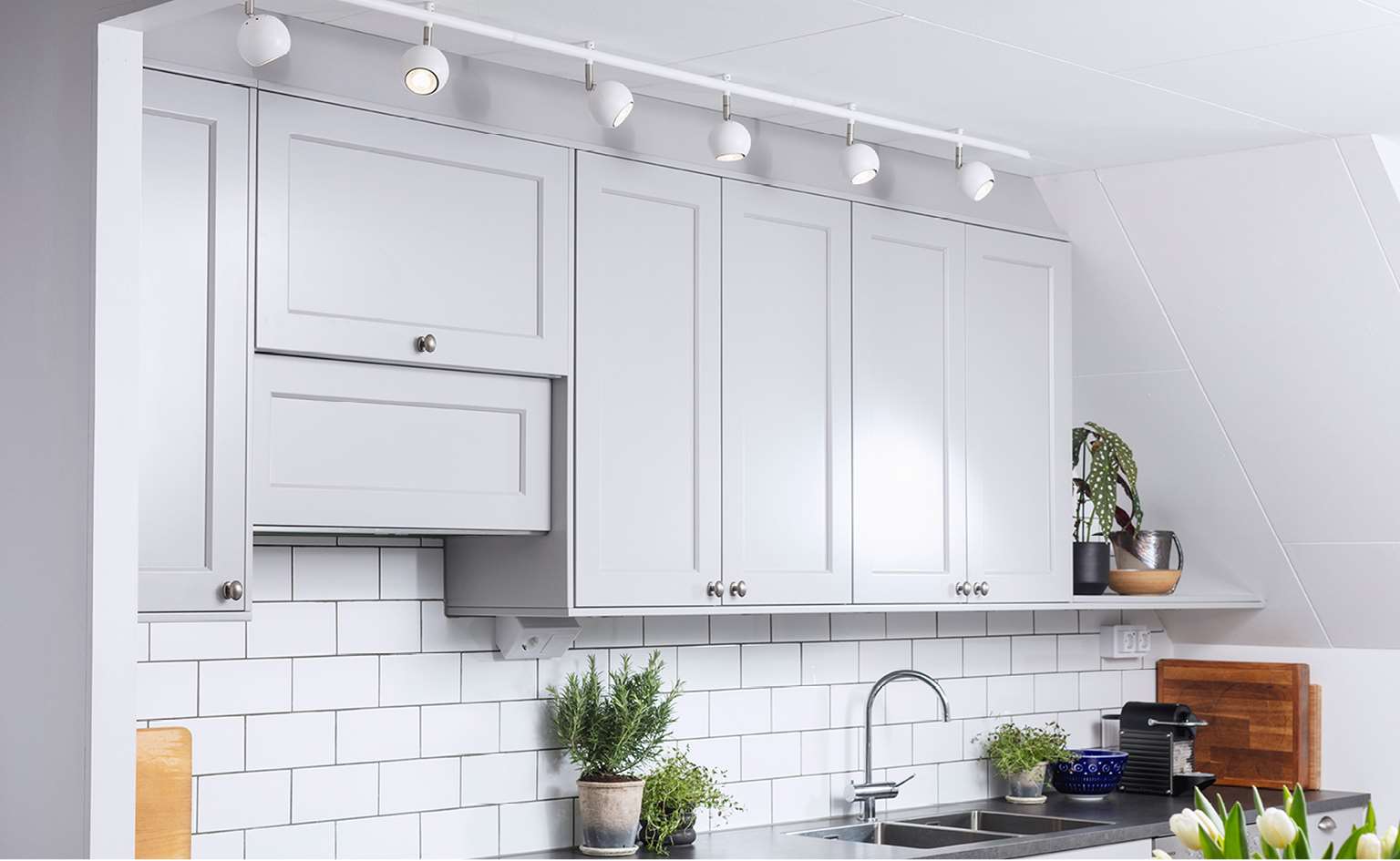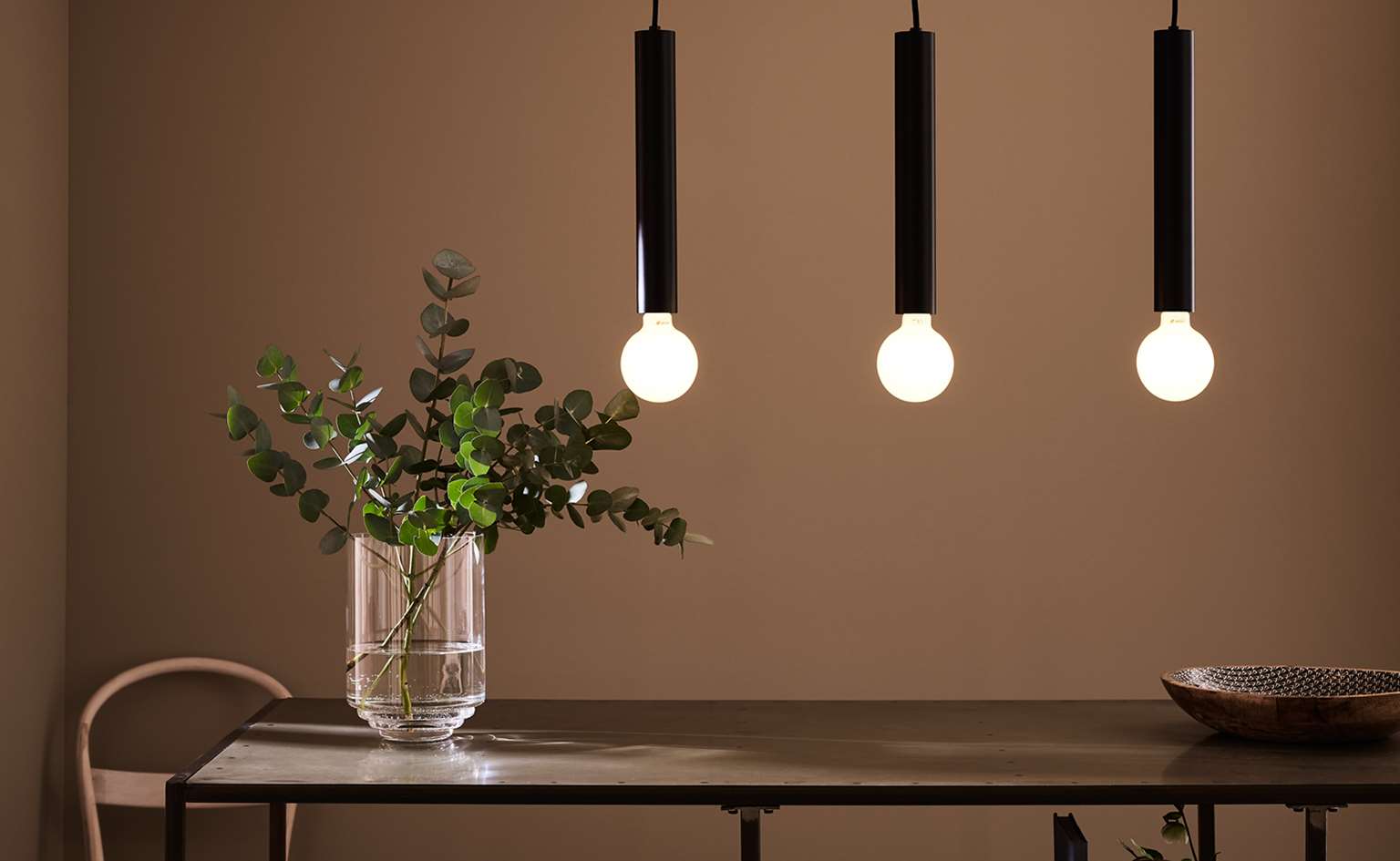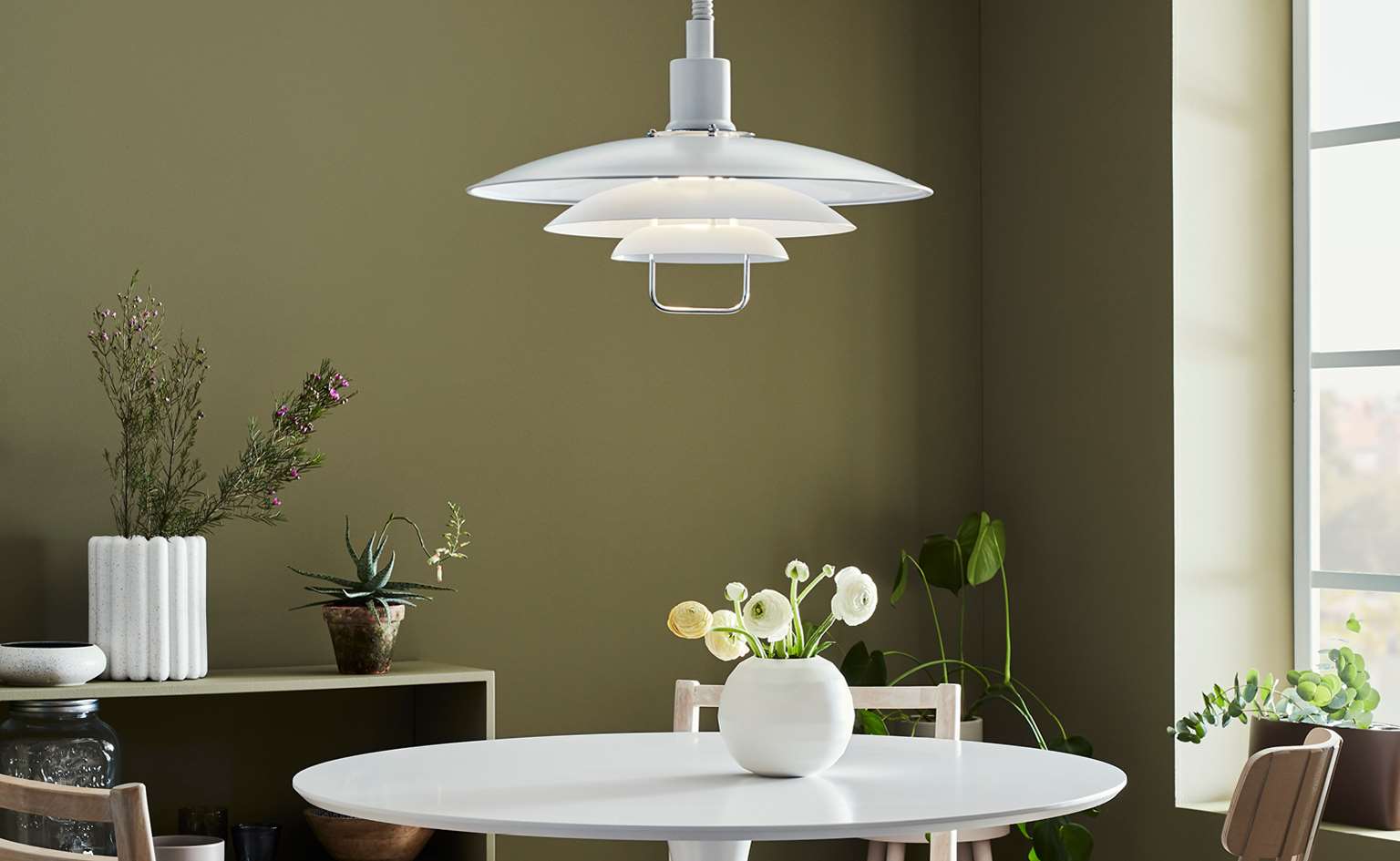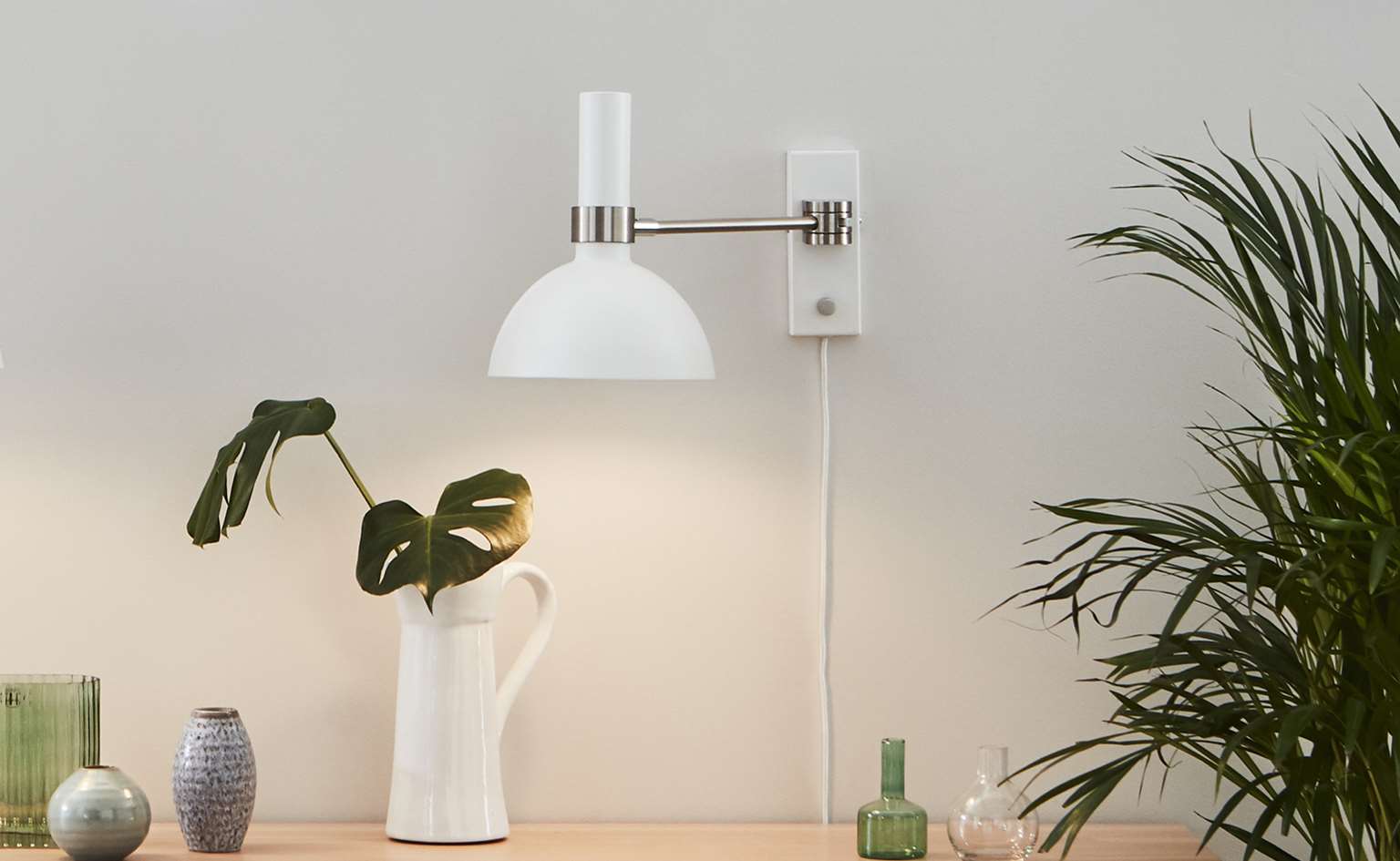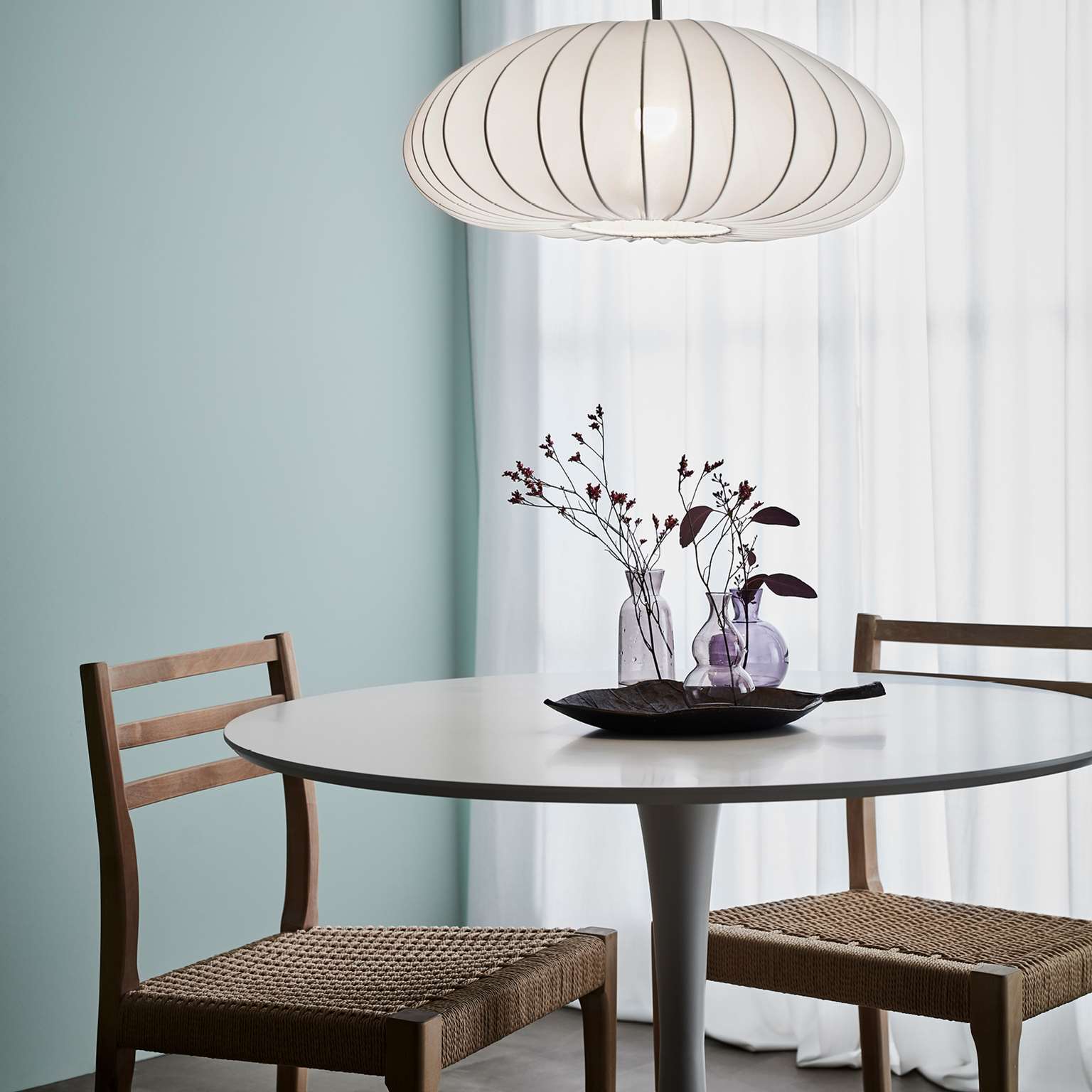Ceiling lamps for the kitchen
With the right ceiling lamps in the kitchen, you get a room that can be used for more than just cooking. It is said that the kitchen is the heart of the home, a lot of activities take place here. By choosing the right lighting you can make your kitchen a perfect place to relax, do homework and enjoy long dinners with friends.
Which lamp should I have in the kitchen?
In the kitchen, you should have a bright ceiling lamp that provides good work lighting during cooking. Go for light bulbs with LED for your kitchen lamp, for low energy consumption and longer durability. Above the dining table, it’s a good idea to have one or more ceiling lamps that provide good lighting during dinner and homework. Use dimmable light sources so that you can adjust the brightness as needed.
Choose the right lamp for your dining table
Depending on the shape and size of your dining table, you can decorate it with different lamps. Let your choice of lighting be determined by how you use the table. Below we guide you how high the ceiling lamp should hang over the dining table. You’ll also find tips on what to consider when choosing a ceiling lamp for your kitchen table.
At what height should the kitchen lamp hang?
A pendant should hang about 60 cm above the table-top, measured from the bottom of the lamp. This is a good height to avoid being glared by the light source, and still allow people around the table to see each other.
How big should my lamp be over the dining table?
The optimal size of the lamp depends on the size and shape of the table. Here you can read more about which lamps fit your kitchen table.
Round dining table
Over a round table, a pendant with a round ceiling plate is ideal. Create a dynamic look in the room with a kitchen lamp that has light sources in different heights.
Square dining table for 4 people
For a square table, a larger ceiling lamp is a good choice. Choose a lamp that gives broad light distribution across the table.
Large table for at least 6 people
If you have a larger dining table for 6 people, you can put up two or more ceiling lamps next to each other. This will create a more balanced look while illuminating the entire surface. You can also put up an elongated ceiling lamp to get light on the whole table.
Kitchen Island
The kitchen island often functions as a workplace where you prepare your food, and you need bright lighting. Spotlights are a good choice for work lighting. If you use the kitchen island as a dining area, it’s a good idea to place several pendant lights in a row to create a beautiful symmetry. Remember to hang them at the right height to avoid glare and shadows.
How many light sources are needed in the kitchen?
In the kitchen, you should have at least seven light sources. Decorate with different types of light sources – work lighting, general lighting and atmospheric lighting. Work lighting under the wall cupboards, general lighting in the ceiling and atmospheric lighting for a calmer feel in the room. The bigger the kitchen, the more light sources you need.
Choosing light sources
Clear light sources are great for lamps with transparent shades where the light source should be visible. Crystal chandeliers work well with clear light sources, as the prisms create interesting reflections and shadows in the room.
Matte light sources are a safe choice as they achieve an even light distribution and softer light. With a matte light source, there is less risk of being glared by the light.
Directed kitchen lighting with spotlights
Spotlights in the ceiling provide good general lighting in the kitchen. The advantage of a spotlight rail is that you can direct the light in different directions. Light up cabinets, worktops, fridges, freezers and other places with ease.
Downlights take up little space
Downlights and recessed spots in the kitchen ensure that you get directed light downwards. The advantage of downlights is that they take up little space and are ideal if you have low ceilings. At the same time, they also provide good general lighting. Place them next to kitchen cabinets, fridges and freezers, in cabinets and other places where you want extra light.
Ceiling pendants above the kitchen island
Create an exciting look with a pendant lamp above the kitchen island. If you are cooking by the kitchen island, it is important to have bright enough lighting here. The kitchen island can also be a place to eat dinner and drink your morning coffee, a decorative ceiling lamp can then be a good fit. For a symmetrical impression, you can place three pendant lights in a row.
Ceiling lamp above dining table
When choosing a pendant for your dining table, it’s a good idea to choose a pendant that lights up all or large parts of the table. Consider whether you want a ceiling lamp that directs the light downwards or spreads wide light to the sides as well. A lift lamp is practical if you want to be able to adjust the height of the lamp. Crystal chandeliers add an elegant touch to your dining table.
Wall lamps above the kitchen counter
You can complement the ceiling lighting with wall lamps by the work surface. Flexible wall lighting with tiltable shades, and adjustable arms are a good choice for the kitchen. Place them by the kitchen counter so that you can direct the light where it is needed the most.
LED strips under cabinets and in drawers
Light up cabinets and boxes with LED strips. They provide bright work lighting on the worktop. Discover our Combine series – a range of LED lighting that can be mounted under the top cupboards, inside kitchen cabinets and in kitchen drawers. The Combine series is buildable, and you can easily connect it yourself. Use Combine with motion sensors so the light turns on when you open drawers and cabinets. Once the dinner and the dishes are out of the way, you can dim down for a cosy and pleasant glow.
Flexible kitchen with different lighting
Working lights
The goal in the kitchen is to have so many light sources that you get shadow-free light over the work surfaces. This is to reduce the risk of injuries while cooking, but it also makes your kitchen more flexible. You will be able to work from all angles and corners if you know that the lighting is good there.
Decorative lighting
The atmospheric lighting is also important for making the kitchen feel nice and come into its own. Shades, contrasts and different types of light diffusion often do more for a room than colors and materials. Remember that balance is important. Create a contrast between the kitchen’s practical lighting and the decorative ambience lighting.
General lighting
General lighting ensures that you have good basic lighting in the kitchen. Place different kinds of light spots in different places – spots in the ceiling, ceiling lamp by the dining table, wall lamps by the kitchen counter and LED strips under the wall cupboard. Use different brightness levels and the light of the different lamps to quickly change the character and atmosphere in the kitchen.

 Denmark
Denmark